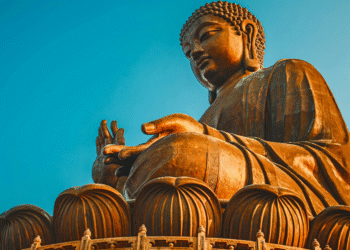Key Takeaways
- Perfect 3-Day Structure: This guide provides a day-by-day breakdown, covering Hong Kong Island’s classics, Kowloon’s vibrant markets, and Lantau Island’s serene landscapes.
- Iconic & Hidden Gems: Discover must-see attractions like Victoria Peak and the Tian Tan Buddha, alongside local favorites like the Chi Lin Nunnery and Tai O Fishing Village.
- Efficient Navigation: Learn the best ways to get around using the MTR, Star Ferry, and trams, with practical tips on using the Octopus Card for seamless travel.
- Culinary Journey: Find recommendations for authentic dining experiences, from world-famous dim sum and roast goose to bustling street food stalls in Mong Kok.
- Practical Planning: Get essential advice on the best time to visit, budgeting, packing, and cultural etiquette to make your trip smooth and enjoyable.
 Introduction
Introduction
Welcome to my home, Hong Kong—a city that pulses with an energy unlike anywhere else on earth. It’s a place where shimmering skyscrapers pierce the clouds while ancient traditions thrive in incense-filled temples below. It’s a concrete jungle, a culinary paradise, and a hiker’s dream, all rolled into one compact, electrifying package. For first-time visitors, navigating this vertical city can seem daunting, but that’s where I come in. I’m here to guide you through the perfect 3-day Hong Kong itinerary, showing you how to experience its biggest highlights without missing the quiet, authentic moments that truly define it.
This isn’t just a checklist of tourist spots; it’s an invitation to experience Hong Kong as we locals do. We’ll ride the historic Star Ferry across Victoria Harbour, get lost in the neon-drenched alleys of Mong Kok, and find tranquility atop a mountain with a giant bronze Buddha. You’ll eat some of the best food of your life, from Michelin-starred dim sum to humble street-side egg waffles. Forget the whirlwind tour that leaves you exhausted. This itinerary is designed to be immersive, manageable, and utterly unforgettable.
Over the next three days, you’ll see the city from its highest peak and its busiest streets. You’ll taste its complex flavors and feel its unique rhythm. So, pack your walking shoes, bring an empty stomach, and get ready to fall in love with the dazzling, dynamic, and deeply soulful city that is Hong Kong.
Planning Your 3-Day Hong Kong Trip
Planning is key to making the most of a short trip in a city as dense as Hong Kong. The best time to visit is during the autumn and early winter, from October to December. During these months, the humidity drops, and you’re treated to clear skies, pleasant temperatures, and a refreshing breeze—perfect for both urban exploration and island hiking. Spring (March to May) is also pleasant, though it can be more humid and prone to fog, which might obscure those famous skyline views.
Summer, from June to September, is hot, humid, and rainy, with typhoon season in full swing. While you can still have a great time, be prepared for sudden downpours and have flexible indoor plans. A 3-day trip is a fantastic introduction to the city’s highlights. It’s just enough time to see the iconic sights on Hong Kong Island, dive into the bustling markets of Kowloon, and even escape to an outer island for a change of pace.
Expect a fast-paced environment where efficiency is king. Hong Kong’s public transport is world-class, so getting around is a breeze. English is widely spoken in tourist areas, hotels, and on public transport, making navigation straightforward for international visitors. Embrace the energy, be prepared to walk a lot, and always keep your eyes open—there’s a surprise waiting around every corner.
Getting to Hong Kong
Your adventure begins at Hong Kong International Airport (HKG), a major global hub that is as efficient as it is enormous. Consistently ranked among the world’s best airports, HKG is your gateway to the heart of Asia. When searching for the best flight deals to Hong Kong, booking a few months in advance, especially if you plan to travel during the peak autumn season, is always a wise strategy.
Once you land and clear immigration, getting into the city is incredibly simple. The fastest and most popular option is the Airport Express train. This sleek, modern train whisks you to Kowloon in about 22 minutes or Hong Kong Station (in Central) in just 24 minutes. From there, you can easily connect to the MTR subway system or grab a taxi to your hotel. It’s clean, reliable, and offers free Wi-Fi, allowing you to connect and plan your next move as you ride.
Alternatively, public buses offer a more scenic and budget-friendly route to various parts of the city, though the journey takes significantly longer. Taxis are also readily available and provide a convenient door-to-door service, which is a great option if you’re traveling with a group or have a lot of luggage. No matter which option you choose, you’ll find the transition from airport to city seamless, setting the tone for a hassle-free trip.
Getting Around Hong Kong
Navigating Hong Kong is an experience in itself, thanks to one of the most efficient, clean, and affordable public transportation systems in the world. The cornerstone of this network is the Mass Transit Railway (MTR). This extensive subway system covers all major areas of the city and is the fastest way to travel between districts. Stations are clean, signage is in both Chinese and English, and trains are frequent. Your first purchase upon arrival should be an Octopus Card, a rechargeable smart card that can be used for the MTR, buses, ferries, trams, and even at convenience stores and fast-food restaurants.
The Star Ferry is more than just a mode of transport; it’s a piece of living history and arguably the most scenic journey on the planet for its price. The short trip across Victoria Harbour between Tsim Sha Tsui (Kowloon) and Central (Hong Kong Island) offers breathtaking, postcard-perfect views of the skyline. For a few Hong Kong dollars, you get a front-row seat to one of the world’s most spectacular cityscapes. It’s a must-do experience, especially around sunset or during the nightly Symphony of Lights show.
On Hong Kong Island, don’t miss a ride on the historic double-decker trams, affectionately known as the “ding-dings.” These trams slowly rattle through the island’s busiest districts, from Kennedy Town to Shau Kei Wan, offering a fantastic, ground-level view of the city’s vibrant street life. While driving is generally not recommended for tourists due to heavy traffic and limited parking, car rentals can be an option for those planning specific excursions to more remote parts of the New Territories or Lantau Island.
Day 1: Hong Kong Island Highlights
Your first day is all about diving headfirst into the iconic sights of Hong Kong Island, where colonial history meets futuristic finance. This is the Hong Kong you’ve seen in movies—a dazzling landscape of towering skyscrapers, lush green mountains, and bustling streets. We’ll start from the very top with panoramic views and work our way down through historic neighborhoods, ending the day with a spectacular harbour crossing. It’s a day of contrasts, showcasing the island’s unique blend of East and West, old and new. For an overview of what the city has to offer, the Hong Kong Tourism Board is an excellent resource.

Morning: Victoria Peak & Central
Our day begins with a journey to the city’s most famous viewpoint: Victoria Peak. The adventure starts with a ride on the Peak Tram, a funicular railway that has been hauling visitors up the steep mountainside since 1888. The ride itself is an experience, as the skyscrapers of Central appear to tilt at an impossible angle as you ascend. To avoid the longest queues, try to go on a weekday morning. You can find schedules and ticket information on The Peak’s official website.
At the summit, you’ll be greeted by a breathtaking 360-degree panorama of Hong Kong’s skyline, Victoria Harbour, and the surrounding islands. While the Sky Terrace 428 at the Peak Tower offers the highest viewing platform, the free lookout at the Lions Pavilion provides an equally stunning, classic view. Take a leisurely stroll along Lugard Road, a flat path that circles the peak, for more incredible vistas away from the crowds.
After descending from The Peak, immerse yourself in the heart of the city: Central. This is Hong Kong’s financial district, a canyon of gleaming glass and steel. But amidst the corporate towers, you’ll find a world of hidden gems. Ride the Central-Mid-Levels Escalator, the world’s longest outdoor covered escalator system, which carries commuters through a vibrant neighborhood of restaurants, bars, and boutiques. It’s a fantastic way to observe the daily life of the city from a unique vantage point.
Afternoon: Man Mo Temple & Hollywood Road
From the modern hustle of Central, we take a step back in time with a short walk to Sheung Wan. Here, you’ll find Man Mo Temple, a tranquil oasis of calm amidst the urban chaos. As you step inside, the air grows thick with the smoke of giant incense coils hanging from the ceiling, creating a mystical and contemplative atmosphere. Dedicated to the gods of literature (Man) and war (Mo), this temple has been a spiritual anchor for the community since the 1840s.
Visiting the temple is a deeply sensory experience. Observe locals paying their respects, watch the light filter through the smoky haze, and take a moment to appreciate the intricate details of the temple’s architecture. It’s a beautiful reminder of the spiritual traditions that continue to thrive in this hyper-modern city. You can read reviews and get more historical context on its Tripadvisor page.
Just outside the temple is Hollywood Road, a street famous for its antique shops, art galleries, and trendy boutiques. This was one of the first roads built in Hong Kong, and it has evolved from a trading post for sailors into a sophisticated hub for art and culture. Spend the afternoon browsing the eclectic mix of stores, where you can find everything from priceless Ming dynasty furniture to contemporary Chinese art. It’s a fascinating walk that tells the story of Hong Kong’s transformation.
Evening: Star Ferry Ride & Victoria Harbour
As evening approaches, it’s time for one of Hong Kong’s most quintessential experiences: a ride on the Star Ferry. Head down to the Central Ferry Pier and hop on a boat bound for Tsim Sha Tsui. The journey is short, but the views are priceless. Time your ride with the sunset to watch the sky explode in color behind the silhouetted skyscrapers. As daylight fades, the city begins to light up, transforming into a galaxy of glittering lights.
This iconic ferry has been shuttling passengers across the harbour since 1888, and it remains the most charming way to make the crossing. The gentle rocking of the boat, the smell of the sea, and the cool breeze provide a perfect moment of reflection as you gaze upon the magnificent skyline. You can check the schedule on the Star Ferry’s official website to plan your trip perfectly.
Once you arrive in Tsim Sha Tsui, find a spot along the waterfront promenade for the main event: the Symphony of Lights. Every night at 8:00 PM, dozens of buildings on both sides of the harbour erupt in a synchronized display of laser beams, colored lights, and searchlights, all set to music. It’s a dazzling spectacle that celebrates the energy and spirit of Hong Kong. After the show, you can enjoy a stroll along the Avenue of Stars, Hong Kong’s version of the Hollywood Walk of Fame, before heading to dinner in the vibrant Tsim Sha Tsui district.
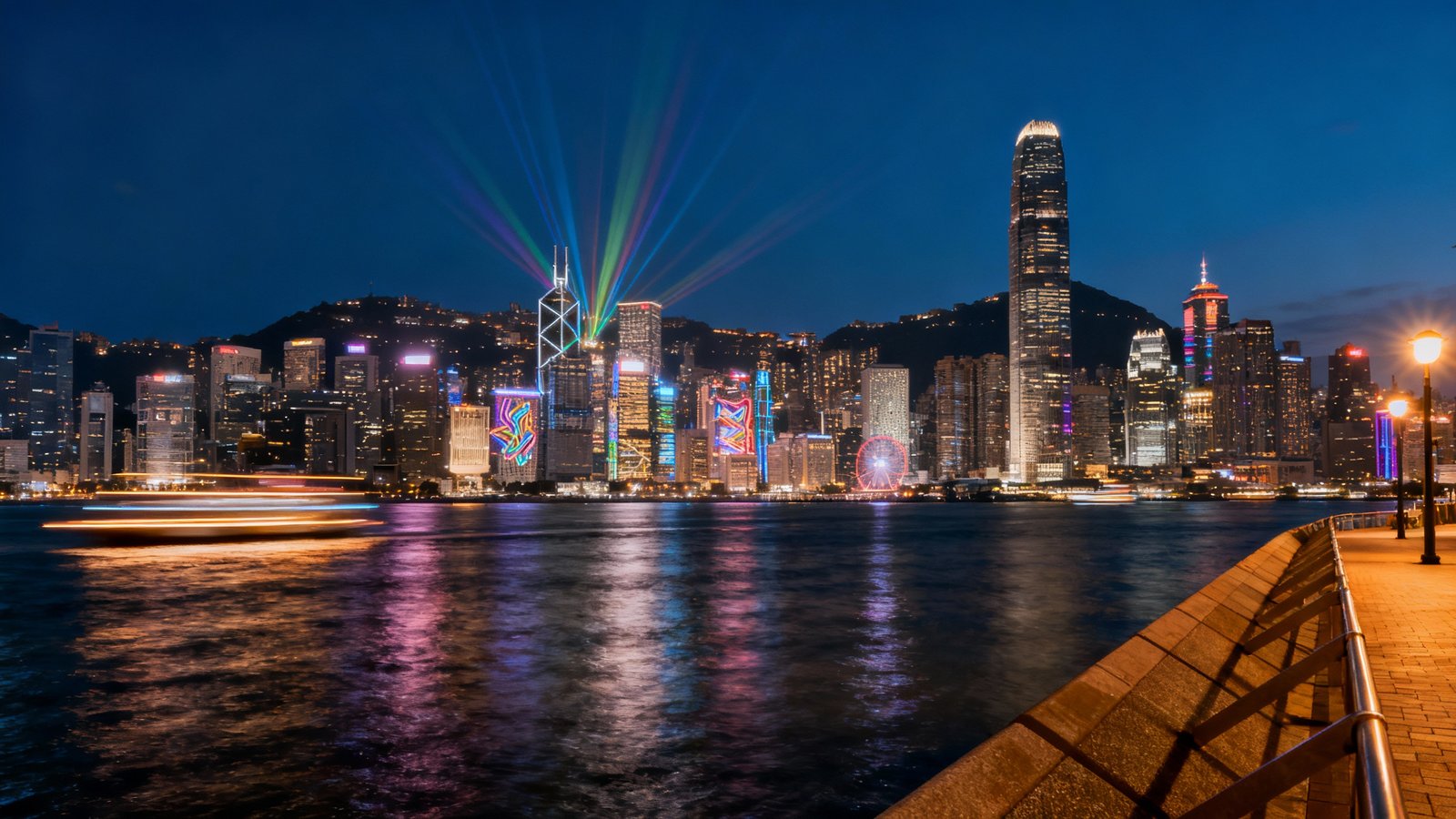
Day 2: Kowloon Markets & Cultural Spots
Today, we cross the harbour to explore Kowloon, the vibrant and densely populated peninsula that offers a stark, fascinating contrast to the polished feel of Hong Kong Island. Kowloon is where you’ll find a more traditional, grittier, and arguably more authentic side of the city. It’s a sensory overload in the best possible way, with bustling street markets, fragrant temples, and some of the best food you’ll ever taste. Prepare for a day of walking, exploring, and immersing yourself in the chaotic charm of Hong Kong’s beating heart.
Morning: Wong Tai Sin Temple & Chi Lin Nunnery
Our second day begins with a spiritual journey to two of Kowloon’s most significant cultural landmarks. First, we visit the Wong Tai Sin Temple, one of the busiest and most popular temples in Hong Kong. This grand Taoist temple is famous for a unique practice: fortune-telling. You’ll see hundreds of worshippers practicing kau cim, shaking a bamboo cylinder of fortune sticks until one falls out, which is then exchanged for a corresponding piece of paper that predicts their future.
The temple’s vibrant colors, ornate architecture, and the constant buzz of activity make it a fascinating place to visit, even if you’re not seeking your fortune. It’s a living, breathing center of local culture and faith. From there, we seek a different kind of spiritual experience at the Chi Lin Nunnery, a large Buddhist temple complex that feels a world away from the city’s hustle. The entire complex was built using traditional Tang dynasty techniques, with interlocking pieces of wood and no nails.
The serene atmosphere is palpable. Stroll through the elegant wooden halls, admire the statues of buddhas and bodhisattvas, and find peace in the meticulously manicured lotus ponds. Adjacent to the nunnery is the Nan Lian Garden, a public park also designed in the Tang style, featuring hills, water features, rocks, and wooden structures. It’s a masterpiece of landscape design and a perfect place for a quiet, contemplative walk. The tranquility here is a beautiful contrast to the energy of Wong Tai Sin, and you can find more visitor information on the Chi Lin Nunnery’s Tripadvisor page.
Afternoon: Mong Kok & Street Markets
After a peaceful morning, it’s time to dive headfirst into the glorious chaos of Mong Kok, one of the most densely populated places on Earth. This is the Hong Kong of neon signs, crowded streets, and endless shopping. Mong Kok is famous for its themed markets, each specializing in a different type of product. We’ll start at the Ladies’ Market on Tung Choi Street, a kilometer-long stretch of stalls selling clothing, accessories, souvenirs, and trinkets. Don’t be afraid to haggle—it’s all part of the fun.
Just a few blocks away, you’ll find other fascinating markets. Sneaker Street (Fa Yuen Street) is a mecca for sneakerheads, with dozens of shops selling the latest releases and rare finds. The Goldfish Market (Tung Choi Street North) is a curious sight, with walls lined with plastic bags of colorful fish for sale. The Flower Market and the Yuen Po Street Bird Garden are also nearby, offering a fragrant and melodious escape from the urban intensity.
Exploring Mong Kok is about more than just shopping; it’s about soaking up the atmosphere. The area is also a paradise for street food lovers. Grab a curry fish ball skewer, a fluffy egg waffle, or some stinky tofu as you wander through the crowded lanes. For a more structured exploration, you could consider a guided tour of Mong Kok’s markets to get a local’s perspective on this incredible neighborhood.
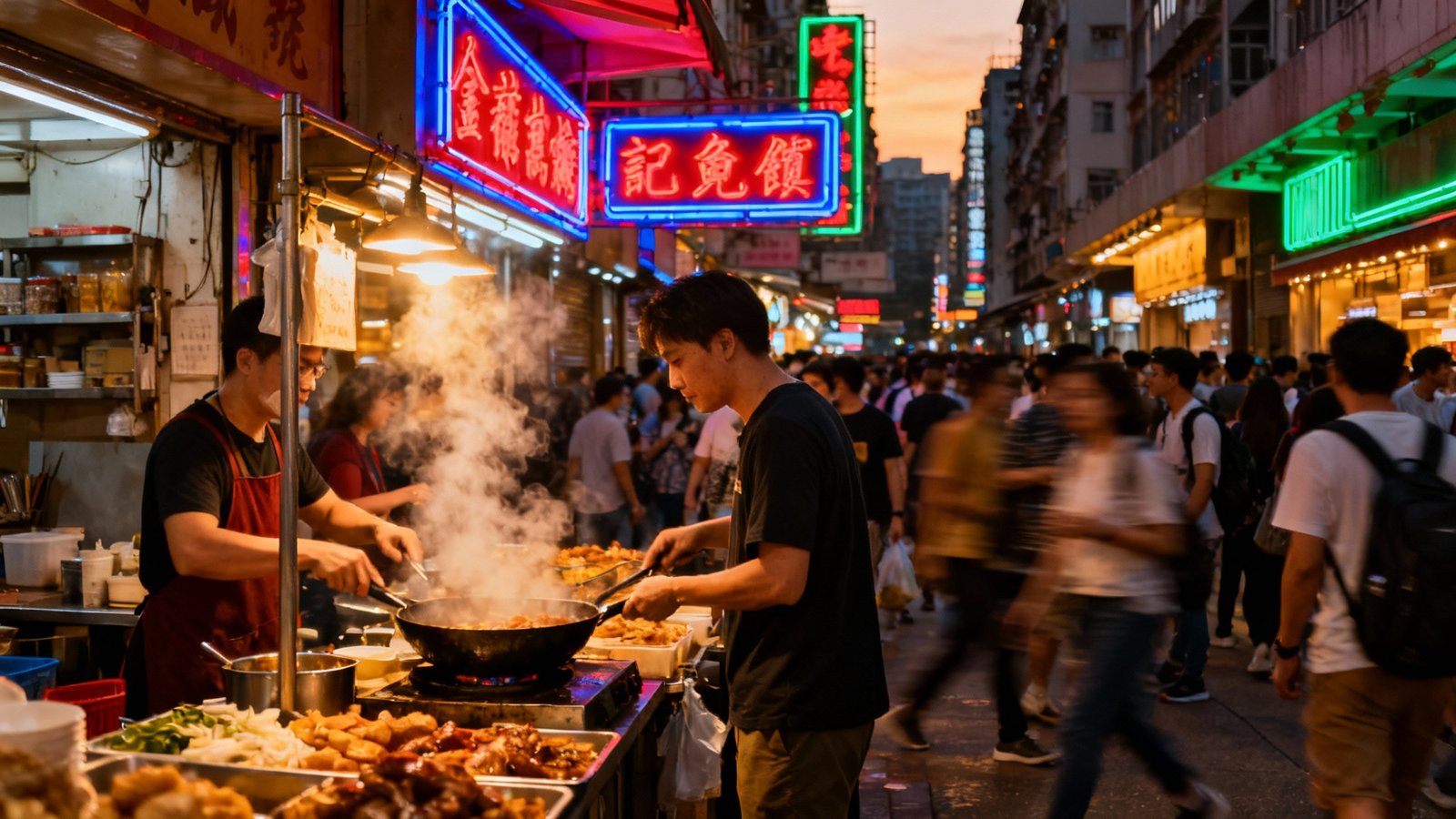
Evening: Temple Street Night Market
As night falls in Kowloon, our destination is the legendary Temple Street Night Market. When the sun goes down, this street in Jordan transforms into a vibrant open-air marketplace that offers a feast for the senses. It’s a quintessential Hong Kong experience, filled with the sounds of vendors hawking their wares, the smells of sizzling street food, and the sights of colorful lights and bustling crowds. This is where you come for bargain hunting, delicious food, and a dose of local culture.
The market is a treasure trove of goods, from electronics and tea sets to clothing and jade trinkets. It’s a great place to pick up souvenirs, but the real magic of Temple Street lies in its atmosphere. As you browse the stalls, you’ll also find fortune tellers, palm readers, and even Cantonese opera singers performing for enthusiastic crowds. It’s a spectacle of street-level entertainment that feels both chaotic and wonderfully authentic.
No visit to Temple Street is complete without indulging in the local food. The market is famous for its dai pai dongs (open-air food stalls), where you can pull up a plastic stool and feast on fresh seafood, claypot rice, and stir-fried noodles. Dining here is a noisy, communal, and utterly delicious experience. For more details on what to expect, its Tripadvisor page has plenty of visitor reviews and tips.
Day 3: Islands & Hidden Neighborhoods
For our final day, we’ll escape the intense urban energy of the city and explore a different side of Hong Kong: its beautiful outer islands and traditional villages. Many visitors are surprised to learn that over 70% of Hong Kong’s territory is countryside, including 263 islands. Today, we’ll journey to the largest of them, Lantau Island, to see a giant bronze Buddha and a historic fishing village, offering a peaceful and scenic conclusion to our 3-day Hong Kong itinerary.
Morning: Lantau Island & Tian Tan Buddha
Our day begins with a trip to Lantau Island, home to the iconic Tian Tan Buddha, also known as the Big Buddha. The journey there is an attraction in itself. From the Tung Chung MTR station, we’ll take the Ngong Ping 360 cable car for a spectacular 25-minute ride. As you glide over Tung Chung Bay and the lush green mountains of Lantau North Country Park, you’ll be treated to stunning panoramic views. On a clear day, you can see all the way to the airport and the South China Sea.
Upon arriving at Ngong Ping Village, a culturally themed village with shops and eateries, you’ll see the majestic Big Buddha seated atop a hill. To reach it, you’ll need to climb 268 steps, but the effort is well worth it. The sheer size and serene presence of the 34-meter-tall bronze statue are awe-inspiring. The platform at the base of the Buddha offers incredible views of the surrounding mountains and coastline. You can find ticket prices and opening hours on the Ngong Ping 360 official website.
After visiting the Buddha, take some time to explore the nearby Po Lin Monastery, a beautiful and active Buddhist monastery founded in 1906. The grand halls are filled with ornate decorations and golden statues, and you can enjoy a simple but delicious vegetarian lunch served by the monks. The combination of the majestic Buddha, the peaceful monastery, and the stunning natural scenery makes for a truly memorable morning.
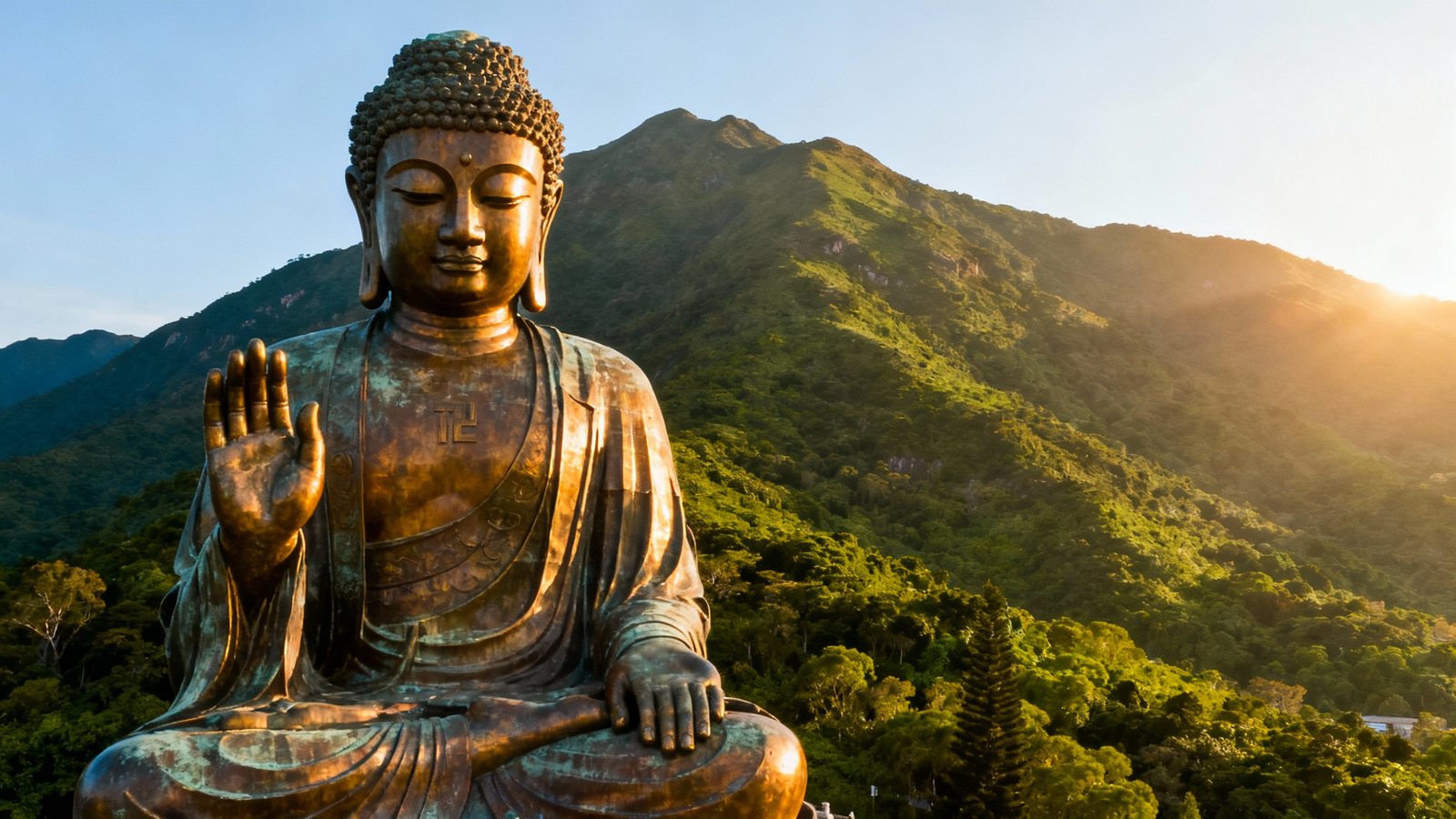
Afternoon: Tai O Fishing Village
From the spiritual highlands of Ngong Ping, we’ll take a short bus ride down to Tai O, a historic fishing village on the western coast of Lantau Island. Tai O offers a rare glimpse into Hong Kong’s past, a time before the skyscrapers and financial hubs. The village is famous for its pang uks, or stilt houses, which are built directly over the tidal flats of the Lantau Channel. It’s one of the few remaining places where you can see this traditional style of architecture.
Spend the afternoon wandering through the narrow lanes of the village, where you’ll find a bustling market selling dried seafood, shrimp paste, and other local delicacies. The smell of the sea and drying fish is everywhere, adding to the authentic atmosphere. The villagers are friendly, and life here moves at a much slower pace than in the city. It’s a fascinating cultural experience that feels a world away from Central Hong Kong.
One of the most popular activities in Tai O is taking a short boat trip around the village. These boat tours will take you through the channels to see the stilt houses up close and then out into the open water for a chance to spot the rare Chinese white dolphins (also known as pink dolphins) that inhabit the area. A guided tour of Tai O can provide deeper insight into the village’s history and ecology.
Evening: Local Farewell Dinner & Rooftop Views
As our 3-day Hong Kong itinerary comes to a close, it’s time for a memorable farewell dinner. Head back to the city and treat yourself to a meal with a view. Hong Kong is famous for its rooftop bars and restaurants, which offer a dazzling perspective on the city’s glittering skyline. Areas like Tsim Sha Tsui, Central, and Causeway Bay are packed with options, from ultra-chic lounges to more casual eateries.
Choose a restaurant that overlooks Victoria Harbour to enjoy one last look at the Symphony of Lights, this time from above. It’s a magical way to cap off your trip, with the entire city spread out beneath you. Whether you opt for sophisticated Cantonese fine dining or international cuisine, the combination of great food and a spectacular view is an unbeatable Hong Kong experience.
Many of the best rooftop venues are located within hotels, which often boast the most strategic locations for panoramic views. It’s worth exploring different accommodation options not just for your stay, but also to discover their public-access bars and restaurants. Toast to your incredible adventure and the memories you’ve made in this unforgettable city.
Food & Culinary Experiences Along the Way
No trip to Hong Kong is complete without a deep dive into its culinary scene. This city is a food lover’s paradise, offering everything from cheap, delicious street food to the highest concentration of Michelin-starred restaurants in the world. Throughout this itinerary, you’ll have countless opportunities to sample the local flavors. A must-try experience is yum cha, the traditional Cantonese brunch involving dim sum and tea. Head to a bustling restaurant like Tim Ho Wan (the world’s cheapest Michelin-starred restaurant) for heavenly baked BBQ pork buns and shrimp dumplings.
For a classic Hong Kong meal, seek out a cha chaan teng, a local-style diner, for dishes like macaroni soup with ham, pineapple buns with a slab of butter, and silky-smooth milk tea. Roast goose is another local delicacy; the best places have glistening birds hanging in the window, with crispy skin and succulent meat. You’ll find legendary roast goose restaurants in Central and Wan Chai.
Don’t forget to explore the street food culture. In areas like Mong Kok and Sham Shui Po, you can feast on curry fish balls, egg waffles (gai daan jai), fried squid tentacles, and stinky tofu. Each neighborhood has its own culinary identity, from the seafood restaurants on the outlying islands to the trendy international eateries in SoHo. To get a comprehensive taste, consider joining a dedicated Hong Kong food tour that will guide you to the best hidden spots.
Suggested Tours & Experiences
While this itinerary is designed for independent exploration, joining a guided tour can add a rich layer of context and convenience to your trip. Hong Kong offers a vast array of tours that cater to every interest. Food tours are particularly popular, as they take you off the beaten path to family-run eateries and street food stalls you might not find on your own. A knowledgeable guide can explain the history and ingredients behind each dish, turning a simple meal into a cultural lesson.
Walking tours are another fantastic way to explore specific neighborhoods in depth. Whether you’re interested in the colonial history of Central, the street art of Sheung Wan, or the gritty past of Kowloon Walled City Park, a guided walk can bring the city’s stories to life. For those who love the outdoors, there are guided hiking tours along scenic trails like the Dragon’s Back or on Lantau Island.
For a different perspective of the city, consider a harbour cruise. While the Star Ferry offers a quick and classic crossing, a longer junk boat cruise, especially in the evening, provides a more leisurely and luxurious way to enjoy the skyline. For a curated experience, you can find a wide variety of Hong Kong tours and tickets online that cover everything from culinary adventures to cultural deep dives, allowing you to book in advance and secure your spot.
Budgeting & Money-Saving Tips
Hong Kong has a reputation for being an expensive city, but it’s entirely possible to enjoy it on a budget. Your most valuable tool for saving money will be the Octopus Card. Not only does it make travel on public transport seamless, but fares are also slightly cheaper when you use it compared to buying single-journey tickets. Relying on the MTR, buses, and trams instead of taxis will significantly cut down your expenses.
When it comes to food, you can save a lot by eating like a local. Avoid expensive hotel breakfasts and instead grab a pineapple bun from a local bakery. For lunch, many restaurants offer affordable set lunches on weekdays. In the evening, explore the dai pai dongs and cooked food centres found in many neighborhood markets for delicious and cheap meals. A filling and authentic meal can often be found for just a few US dollars.
Many of Hong Kong’s best attractions are free, including hiking trails, parks, and many temples. You can enjoy the Symphony of Lights, wander through markets, and soak up the atmosphere without spending a dime. When changing money, avoid the poor rates at the airport or hotels. To avoid high fees and get better rates on your Hong Kong Dollars, consider using a modern service like Wise for currency exchange before you even arrive.
Travel Insurance & Essentials
While Hong Kong is a very safe and modern city, planning for the unexpected is always a smart move, especially on a short, action-packed trip. From a minor illness or a twisted ankle on a cobblestone street to a lost passport or a flight cancellation, unforeseen events can disrupt your plans and your budget. This is why having comprehensive travel insurance is not just a recommendation; it’s an essential part of responsible travel.
For a 3-day trip, the cost of insurance is minimal, but the peace of mind it provides is invaluable. A good policy will cover medical emergencies, trip cancellations, lost luggage, and theft. It ensures that a small mishap doesn’t turn into a major financial headache, allowing you to relax and fully immerse yourself in the experience of exploring Hong Kong.
Before you depart, take a few minutes to compare policies and find one that suits your needs. Securing reliable travel insurance before you go is a small step that provides immense peace of mind, letting you focus on enjoying every moment of your adventure in this incredible city.
Packing Tips for 3 Days
Packing light and smart is crucial for a 3-day trip to Hong Kong. The most important item you can bring is a pair of comfortable walking shoes. You’ll be doing a lot of walking, from exploring crowded markets to climbing temple stairs, so comfortable footwear is non-negotiable. Given Hong Kong’s subtropical climate, lightweight, breathable clothing made from cotton or linen is ideal for most of the year. Pack layers, as the air conditioning in malls and on public transport can be fierce.
Even in the dry season, a compact umbrella or a light rain jacket is a good idea, as showers can be unpredictable. If you’re visiting in the winter (December to February), bring a warmer jacket or sweater, as temperatures can drop, especially in the evenings. A reusable water bottle is essential for staying hydrated while exploring, and you can refill it at many MTR stations and public facilities.
Don’t forget a universal power adapter (Hong Kong uses the UK-style three-pronged plug) and a portable power bank to keep your devices charged on the go. You’ll be taking a lot of photos, so you don’t want to run out of battery. Finally, pack a small daypack to carry your essentials like your Octopus Card, water bottle, camera, and any souvenirs you pick up along the way.
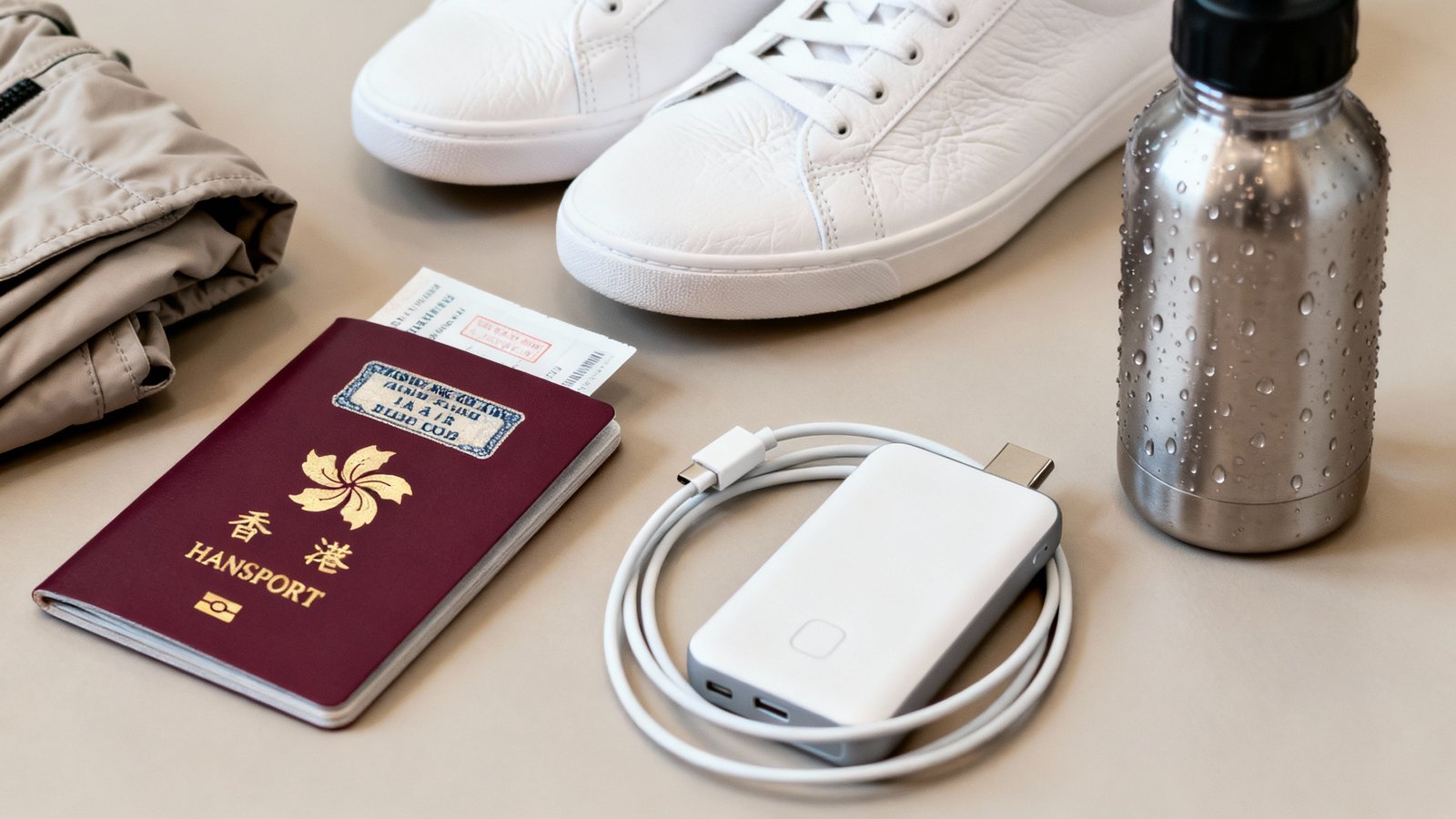
Where to Stay for This Itinerary
Choosing the right neighborhood to stay in can greatly enhance your Hong Kong experience. For a 3-day trip, convenience is key, so staying near an MTR station is highly recommended. For first-time visitors, there are three main areas to consider. Central, Sheung Wan, or Admiralty on Hong Kong Island put you right in the middle of the action, with easy access to The Peak, the Mid-Levels Escalator, and the ferry piers. This area is packed with great restaurants, bars, and shops, but it can be one of the more expensive options.
Across the harbour, Tsim Sha Tsui (TST) in Kowloon is another excellent choice. It offers stunning views of the Hong Kong Island skyline, is a major shopping hub, and provides easy access to the Star Ferry, the Avenue of Stars, and numerous museums. It’s a bustling, energetic area that is well-connected to the rest of the city. You can find a wide range of hotels here, from luxury chains to more budget-friendly guesthouses.
For a more local and budget-conscious experience, consider staying in Yau Ma Tei or Mong Kok, also in Kowloon. These neighborhoods are incredibly vibrant and put you within walking distance of Temple Street Night Market and the Mong Kok markets. While the hotels might be smaller, staying here offers an immersive experience in the heart of local life. You can browse a wide selection of properties on a platform like the Tripadvisor page for Hong Kong hotels to find the perfect fit for your budget and style.
Practical Information
To make your trip as smooth as possible, here are a few final practical tips. In Hong Kong, it’s customary to stand on the right side of escalators to let people in a hurry pass on the left. Tipping is not mandatory, as a 10% service charge is usually included in the bill at restaurants, but leaving small change is appreciated for good service. While credit cards are widely accepted, it’s always a good idea to have some cash on hand for small purchases at local eateries and markets.
Connectivity is excellent in Hong Kong. Free Wi-Fi is available in most MTR stations, shopping malls, and at public facilities marked with the “Wi-Fi.HK” logo. You can also easily purchase a prepaid SIM card at the airport or a convenience store for affordable data access throughout your trip. This is highly recommended for using maps and looking up information on the go.
Hong Kong is one of the safest cities in the world, even for solo travelers. However, as with any major city, it’s wise to be aware of your surroundings, especially in crowded areas, and keep your valuables secure. Finally, embrace the culture. Be respectful when visiting temples, be patient in queues, and don’t be afraid to try something new. The people of Hong Kong are generally efficient and reserved, but they are also helpful if you ask for directions or assistance.

Conclusion
Three days in Hong Kong is a whirlwind adventure, a journey through a city of incredible contrasts and boundless energy. From the breathtaking heights of Victoria Peak to the bustling, neon-lit streets of Mong Kok, and the serene shores of Lantau Island, you’ve experienced the many faces of this remarkable place. You’ve tasted its world-class cuisine, navigated its efficient transport, and witnessed the seamless blend of ancient traditions and futuristic innovation that defines its soul. Hong Kong is a city that imprints itself on you, leaving you with a collection of vibrant memories—the smell of incense in a quiet temple, the taste of a perfect dim sum dumpling, the dazzling spectacle of the skyline at night.
This itinerary is more than just a schedule; it’s a starting point for your own personal discovery. Perhaps you found a hidden art gallery on Hollywood Road, spent hours haggling for the perfect souvenir in a market, or simply sat by the harbour, mesmerized by the endless parade of boats. These are the moments that transform a trip into an adventure. Hong Kong has a way of drawing you in, and even after three packed days, you’ll likely leave feeling that you’ve only just scratched the surface. It’s a city that invites you back, promising new secrets to uncover on your next visit.
I hope this guide has inspired you and given you the confidence to explore my incredible home. The magic of Hong Kong is waiting for you, ready to be discovered. When you’re ready to turn this itinerary into reality, let TripVista360 help you book smarter and piece together your perfect Hong Kong adventure.
FAQs
1. Is 3 days enough for Hong Kong?
Three days is a great amount of time for a first visit. It allows you to cover the main highlights on Hong Kong Island and in Kowloon, and even squeeze in a trip to an outlying island like Lantau. While you won’t see everything, you’ll get a fantastic taste of the city’s diversity and energy.
2. What is the best month to visit Hong Kong?
The best time to visit is from October to December. During these autumn months, the weather is pleasant, with clear skies, low humidity, and comfortable temperatures, making it ideal for sightseeing and outdoor activities.
3. Do I need cash in Hong Kong?
While major hotels, restaurants, and shops widely accept credit cards, it’s essential to have some Hong Kong Dollars (HKD) in cash. You’ll need it for small purchases at street markets, local eateries (cha chaan tengs), and for topping up your Octopus Card at some locations.
4. Is Hong Kong easy to get around for English speakers?
Yes, Hong Kong is very easy to navigate for English speakers. All public transport signs, station names, and official notices are in both English and Chinese. English is also widely spoken in tourist areas, hotels, and restaurants.
5. What is the best way to get from the airport to the city?
The Airport Express train is the fastest and most efficient way. It takes just 24 minutes to reach Hong Kong Station in Central. Alternatively, airport buses are a cheaper, more scenic option, while taxis offer door-to-door convenience.
6. What is the Octopus Card and should I get one?
The Octopus Card is a rechargeable contactless smart card used for public transport, convenience stores, fast-food restaurants, and more. It’s incredibly convenient and highly recommended for any visitor. You can buy one at the airport or any MTR station.
7. Is Hong Kong safe for solo travelers?
Hong Kong is considered one of the safest cities in the world for solo travelers, including women. It has a low crime rate and is well-policed. As with any large city, it’s always wise to be aware of your surroundings, especially at night.
8. What should I pack for a 3-day trip?
Pack comfortable walking shoes, lightweight and breathable clothing, and layers for strong air conditioning. A compact umbrella, a reusable water bottle, a universal power adapter (UK-style plug), and a portable power bank are also essential.


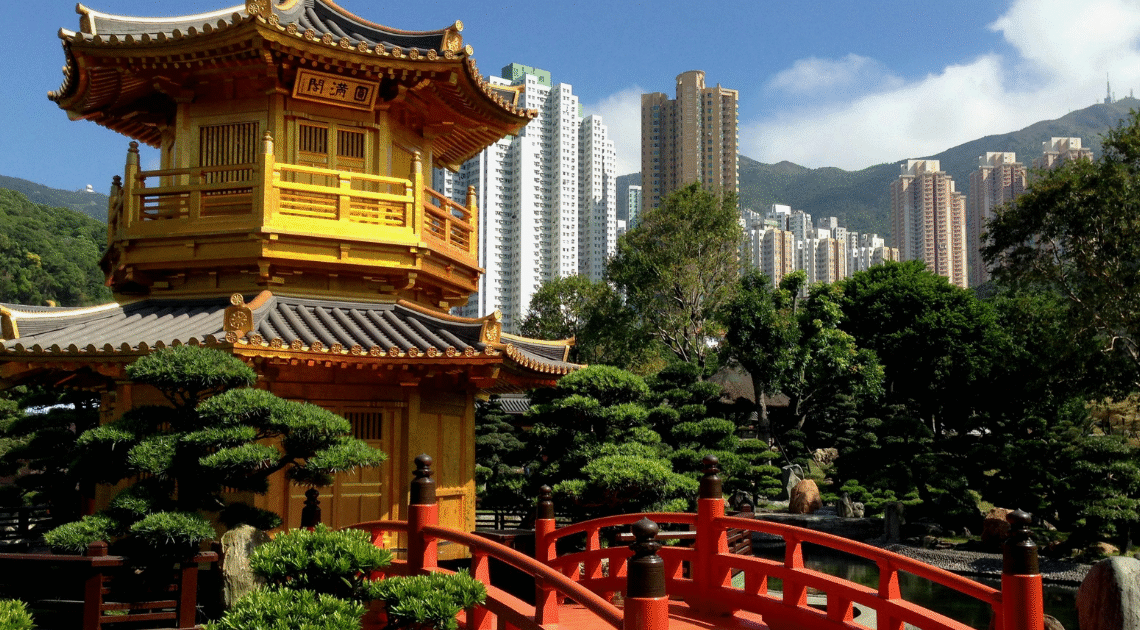
 Introduction
Introduction
